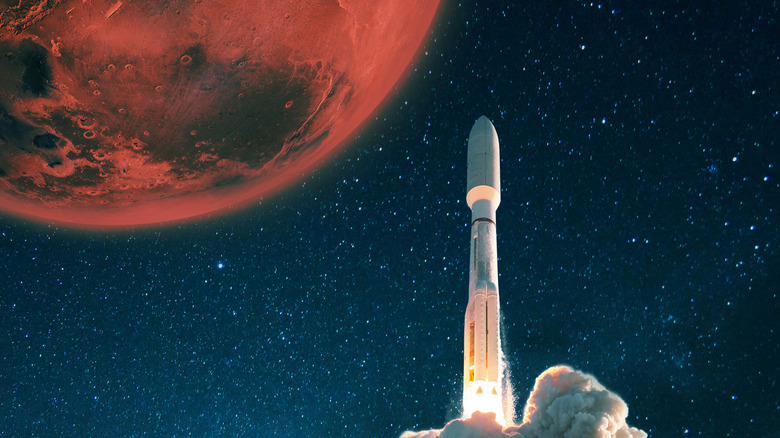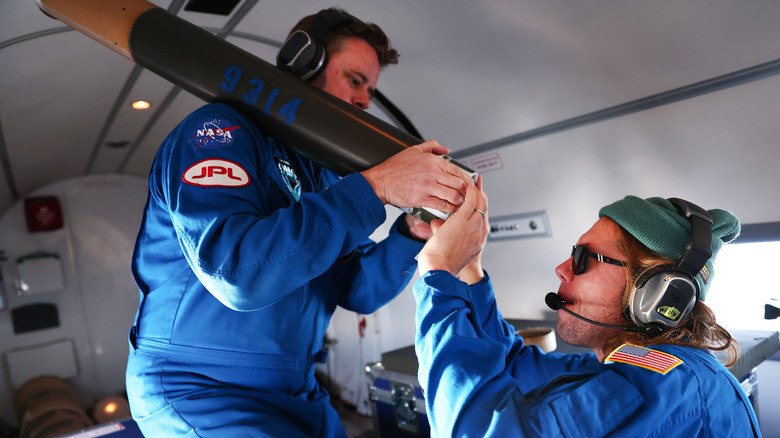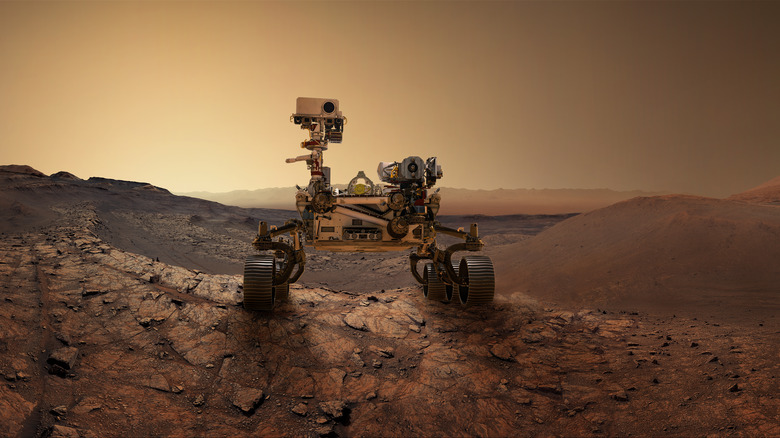The Scientific Reason NASA Sanitizes Spacecrafts Before Going To Mars
Humans have long been fascinated with the idea of life on other planets, and missions to Mars may put us a little closer to finding it. One of the stated purposes of the Mars 2020 mission is to look for traces of previous life on the planet, according to NASA. The other is to bring back rock and dust samples for testing.
With materials traveling between Earth and Mars, there's a possibility for contamination in either direction. Scientists don't want to confuse the search for life on the red planet by accidentally planting lifeforms from Earth there (even unintelligent ones). They also don't want to irreparably change life on Mars, if it exists. Similarly, they don't want microbes from another planet to come back to Earth and harm lifeforms here. Because of this, each spacecraft that heads to or even near another planet is extensively sterilized before it leaves Earth. This process is called "planetary protection" (via The Ringer).
The sanitization process
NASA has certain standards for the sanitization of its spacecraft. Planetary protection engineer for the Mars 2020 mission Kristina Stott told The Ringer, "The entire flight system has an allocation of no more than 500,000 spores." Scott added, "[This] sounds like a lot, but it's actually not a lot. It's almost equivalent to less than what you would find on your camera lens on your smartphone."
However, NASA does accept that every mission will have some possibility of contamination, and the acceptable level allowed for such trips is less than one in 10,000. Each NASA mission to another planet or moon is assigned a category for the threat of contamination it poses. The mission is given a category from one to five, depending on how much the spacecraft will interact with the planet or moon's surface. The Mars 2020 mission is Category 5 — the highest.
There are three techniques used to keep the spacecraft sterile: First, it is put together in a "clean room," with filtered air and frequently sanitized surfaces. Second, the workers in these rooms wear special, protective gear to keep from contaminating the spacecraft themselves. Third, the spacecraft is sterilized with 70% isopropyl alcohol wipes. Sometimes, vaporized hydrogen peroxide is used as well. In the past, NASA used heat for this part of the process, but that can damage the spacecraft (via The Ringer).
Controversies over sanitation
NASA's planetary protection office has previously prevented spacecraft from going to certain areas of a planet or moon where they fear contamination is more likely. Sometimes, these areas are the ones most likely to contain foreign microbes — which may be the proof of life NASA is looking for on Mars. Planetary scientist at Cornell University, Alberto Fairén, argues against that position saying that Mars' harsh surface would kill Earth microbes before they could spread anyway (via Science Magazine).
NASA's Jet Propulsion Labratory (JPL) has had conflicts with the planetary protection office because scientists at the JPL feel the instructions for proper sanitization are unclear. Researchers who help build and direct missions also complain that the sanitization process is too expensive, according to Science Magazine. The Viking landers that went to Mars in the 1970s were the only spacecraft to meet NASA's standard of complete sterilization, and it cost about 10% of the mission's budget. Nonetheless, the standards remain in place, ready for future missions.


